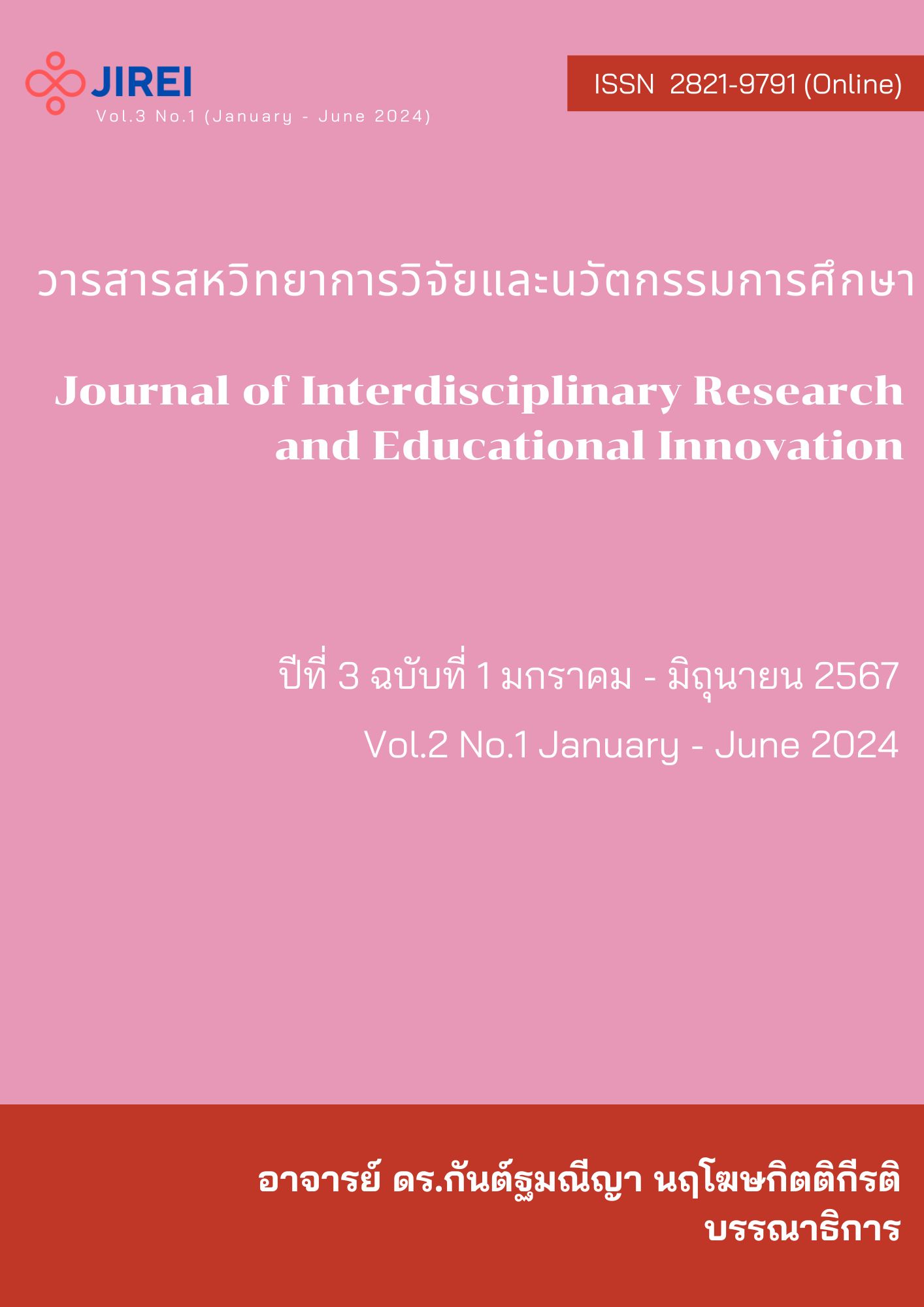ความจงรักภักดีต่อองค์การอย่างยั่งยืนมุ่งสู่คุณภาพขององค์การในยุคสังคมฉลาด : ซุปเปอร์สมาร์ทโซไชตี้ 5.0 (Super Smart Society 5.0)
คำสำคัญ:
ความจงรักภักดี, องค์การยั่งยืน, คุณภาพขององค์การ, ยุคสังคมฉลาดบทคัดย่อ
ความจงรักภักดีต่อองค์การอย่างยั่งยืนมุ่งสู่คุณภาพขององค์การในยุคสังคมฉลาด : ซุปเปอร์สมาร์ทโซไชตี้ 5.0 มีบทบาทสำคัญต่อความสำเร็จและการเติบโตขององค์การนั้น ๆ เป็นตัวกําหนดเอกลักษณ์ของแต่ละองค์การ เป็นตัวเชื่อมโยงความสัมพันธ์ระหว่างสมาชิกกับองค์การ เกิดเป็นค่านิยม บรรทัดฐาน และการแสดงออกของพฤติกรรมร่วมกันของสมาชิกในองค์การ จึงควรสร้างและพัฒนาวัฒนธรรมองค์การให้สอดคล้องกับการเปลี่ยนแปลงเพื่อนำพาให้องค์การสู่ความสําเร็จตามเป้าหมาย สามารถผ่านพ้นวิกฤตต่าง ๆ ได้ และเติบโตอย่างยั่งยืน ช่วยสร้างสภาพแวดล้อมแห่งความไว้วางใจช่วยสร้างวัฒนธรรมแห่งการเรียนรู้ ช่วยส่งเสริมสภาพแวดล้อมในการทำงานที่ยืดหยุ่นช่วยสร้างแรงบันดาลใจแก่บุคลากร ช่วยพัฒนาบุคลากรด้วยวิธีการหลากหลาย ช่วยให้เกิดทักษะในการตัดสินใจอย่างรวดเร็วสามารถปรับกลยุทธ์เพื่อก้าวนำหน้าคู่แข่งผู้นำให้ความสำคัญกับประสิทธิผลของการทำงานและสามารถสร้างฐานลูกค้าที่ภักดีและพึงพอใจ ช่วยให้องค์กรเกิดคุณภาพมีชื่อเสียงและเกิดภาพลักษณ์ที่ดีโดยความจงรักภักดีต่อองค์การอย่างยั่งยืนมุ่งสู่คุณภาพขององค์การในยุคสังคมฉลาด : ซุปเปอร์สมาร์ทโซไชตี้ 5.0 มีลักษณะสำคัญ ได้แก่ การทำงานเชิงรุก เป็นผู้นำการเปลี่ยนแปลง เป็นบุคคลแห่งการเรียนรู้ มีความคิดสร้างสรรค์ ใช้นวัตกรรมเทคโนโลยีดิจิทัล มีความยืดหยุ่นและประนีประนอม มีความฉลาดทางอารมณ์ มีการสื่อสารที่มีประสิทธิภาพ การปรับตัว พันธกิจ การมีส่วนร่วม และการมีเอกภาพ เพื่อการขับเคลื่อนธุรกิจสู่การเติบโตยั่งยืน ควบคู่ไปกับการดำเนินงานอย่างมีความรับผิดชอบต่อสังคมและสิ่งแวดล้อม
เอกสารอ้างอิง
กรองกาญจน์ ทองสุข. (2554). แรงจูงใจในการปฏิบัติงานที่ส่งผลต่อความจงรักภักดีของบุคลากรในวิทยาลัยการอาชีพร้อยเอ็ดจังหวัดร้อยเอ็ด. การค้นคว้าอิสระบริหารธุรกิจมหาบัณฑิต, สาขาวิชาเอกการจัดการทั่วไป, คณะบริหารธุรกิจ, มหาวิทยาลัยเทคโนโลยีราชมงคลธัญบุรี.
จาตุรงค์ วัฒนศิริ. (2552).ความผูกพันความจงรักภักดีและการมีความสุขในการทำงานของครูโรงเรียนจินดาวัฒน์ จังหวัดระยอง. งานนิพนธ์การศึกษามหาบัณฑิต, สาขาวิชา.
น้ำผึ้ง บุบผา. (2552). ปัจจัยที่ส่งผลต่อความภักดีต่อองค์กร: บริษัทในเครือสยามกลการ จำกัด. การศึกษาค้นคว้าด้วยตนเอง เสนอเป็นส่วนหนึ่งของการศึกษาหลักสูตรปริญญาบริหารธุรกิจมหาบัณฑิต สาขาวิชาการบริหารธุรกิจ ของมหาวิทยาลัยนเรศวร.
พยอม วงศ์สารศรี. (2545). การบริหารทรัพยากรมนุษย์. กรุงเทพฯ: สำนักพิมพ์สุภา.
วรารัตน์ เขียวไพรี. (2550). การพัฒนาทรัพยากรมนุษย์ : Human resources management. กรุงเทพฯ: สิรบุตรการพิมพ์.
สาคร สุขศรีวงศ์. (2551). การจัดการ: จากมุมมองนักบริหาร (พิมพ์ครั้งที่4). กรุงเทพฯ: จี พี ไซเบอร์พรินท์.
วิภา จันทร์หล้า. (2559). ความจงรักภักดีของพนักงานที่มีต่อบริษัทโตโยต้า โกเซ เอเชีย จำกัด จังหวัดชลบุรี. หลักสูตรการศึกษามหาบัณฑิต. สาขาวิชาการบริหารการศึกษา. คณะศึกษาศาสตร์ มหาวิทยาลัยบูรพา.
ประคัลภ์ ปัณฑพลังกูร. (2560). ความจงรักภักดีของพนักงานต่อองค์กร มันหายไปจริงๆหรือ.สืบค้น 1 มิถุนายน 2560, จาก https://prakal.wordpress.com/
Aepiphanni Business Consulting. (2023). Dynamic Leadership: How Do Leaders Evolve, Manage. Retrieved from https://aepiphanni.com› blog › dynamic...
Berman, S., & Korsten, P. (2014). Leading in the Connected Era. Strategy and Leadership, 42(1), 37-46.
Bryta, Schulz . (2023).The Dynamic Leadership Framework. Retrieved from https://www.framework. Dynamic.leader.
Ceocosulting. (2023). 7 Traits of a Dynamic Leader .- Retrieved from https://www.ceocosulting.com › post › 7-traits-of-a-dyna.
Dag Von, Lubitz & Nilmini. Wickramasinghe. ( 2006). Dynamic Leadership in unstable and unpredictable environments, International Journal of science Enterprises Ltd, 3(4), 339-350.
Daniels, Richard. (2023). The 10 fundamental traits of a dynamic leader. Retrieved from www.dynamic.trait.leader.
Dawson, P. & Andriopoulus,C. (2014). Managing Change, Creativity and Innovation.
Thousand Oaks: Sage.
Greenfield, David. (2023).The enactment of dynamic leadership National Institutes of Health Retrieved from https://pubmed.ncbi.nlm.nih.gov ›
Grobler, P. A. (2016). In search of excellence: leadership challenges facing companies in the new South Africa. SAM Advanced Management Journal, 61(2), 22-34.
Jacinto C. Gavino & Edwin J. Portugal. (2015). An Integrated and Dynamic Leadership Framework: A Perceptual Map of the Interaction Among the Leader, Followers, Outcomes, and Context. Review of Integrative Business and Economics Research, 4 (4), 237-251.
Kouzes, J. & Posner,B. (2012). The Leadership Challenge, 5th Ed. San Francisco: Jossey- Bass.
Léautier, F. (2014). Leadership in a Globalized World: Complexity, Dynamics and Risks. New York: Palgrave Macmillan.
Medium, Nina. (2023 ), Dynamic leadership is a powerful driver of success. Retrieved from www.dynamic.leadership.
Newton, Robert. (2023). 8 - Principles that a Dynamic Leadership must have Retrieved from https://www.businessstudynotes.com › pr...
Noorderhaven, N., & Vallejo, B. (2016). Transformational leadership and project success: The mediating role of team-building. International Journal of Project Management, 34(5), 806–818.
Rahul, Panchal. (2023). What Is Dynamic Leadership? Inspiring Change And Driving Success The Leadership Quarterly, 39(1), 34–51.
Ross, R. L., Williams, C. E., & Harrington, N. T. (2018). Construct redundancy in leader behaviors: A review and agenda for the future. The Leadership Quarterly, 29(1), 236–251.
Smith, Peter & Cockburn, Tom, (2022). Dynamic Leadership Models for Global Business Retrieved from https://ssrn.com/abstract=3061505.
Warwick, Levey. (2023). 5 Characteristics of Dynamic Leader in a Remote Workforce. Retrieved from https://www.upwork.com
Wolfgramm, S. Flynn-Coleman, D. & Conroy, D. (2015). Dynamic interactions of agency in leadership: an integrative framework for analysing agency in sustainability leadership, Journal of Business Ethics, 26 (4), 649–662.
Adler,P. A., &Adler,P. (1988). Intense loyalty in Organizations: A case study of college Athleties. Administrative Science Quarterly, 33(3), 401-417.
Fletcher, G.P. (1993). Loyalty: An essay on the morality of relationships. New York: Oxford University Press.
Fullagar, C., &Barling, J. (1989). A longitudinal test of model of the antecedents and Consequences of union loyalty. Jounal of Appled Psychology, 71(2), 213-227





